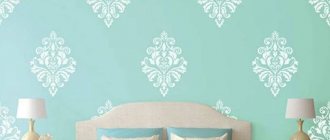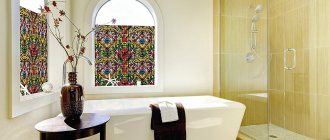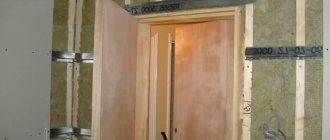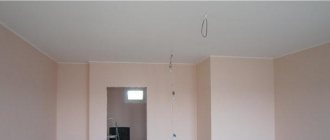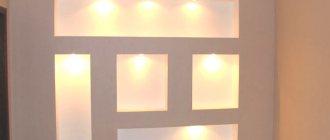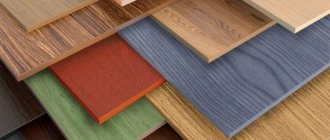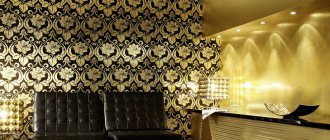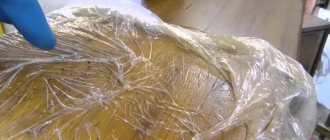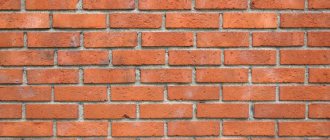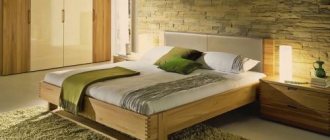Principles of classification
Taking into account the wide range of types and equally universal application possibilities, self-adhesive films are classified according to several criteria, which are worth paying attention to when purchasing this material.
These include:
- structure;
- base material;
- surface type;
- appointment;
- decorative design.
Important! The price of self-adhesive film is very affordable, so anyone can afford to purchase it, regardless of their financial profitability. Deviations in cost will be insignificant for different types; to a greater extent they are regulated by brand awareness - class=”aligncenter” width=”720″ height=”480″[/img]
Types of film based on material
All materials in this category are combined compositions. The main substance used is:
- polyester;
- polyvinyl chloride;
- propylene.
Important! In addition to the main substances, the optimal combination of plasticizers, stabilizers, and pigments is selected. Paper, natural and synthetic fabrics are also often used.
Types of self-adhesive film by structure
Depending on the structure of the fabric, self-adhesive films are distinguished:
- Single layer. This material is made from multicomponent mixtures that include PVC resin and various plasticizers. Stabilizers and pigments are also used as additional substances to impart strength and the desired surface design. All substances are mixed into a homogeneous mass, after which it is formed into a film by extrusion or heat treatment with hot rollers. The rigidity of the film and its physicochemical properties directly depend on the type of plasticizers added.
- Double layer. To produce 2-layer coatings, 2 separate canvases are made - a base and a cover. For the base, fabric or paper is most often used, and for the covering layer, polyvinyl chloride resin of various combinations of substances is used. For manufacturing, methods of calender molding, alluvial, extrusion, and even caching are used. As a result of the work done, more plastic sheets are obtained, which makes their application more convenient, but their technical characteristics are somewhat lower than those of a single-layer film.
Important! Considering these structural features, before buying a self-adhesive film, be sure to clearly define its intended use. The duration of its operation depends on the correct choice.
Adhesives
The production of adhesives is the know-how of manufacturers of self-adhesive materials. In the production of such materials, glue based on rubber, silicone or acrylic is most often used. The range of large manufacturers includes several dozen different adhesives. Adhesives are divided into permanent and removable.
Permanent adhesives are characterized by high adhesive strength - removing a sticker with permanent adhesive leads to its destruction.
Removable adhesives are used in cases where it is necessary to remove the sticker without leaving traces, and in some cases, intact - for reuse. These can be price tags or instructions on household appliances, stickers on cars, advertising stickers, etc. An important quality characteristic of removable adhesives is the ability to remove the sticker without residual traces of glue.
In addition to permanent and removable adhesives, during mass labeling it is technologically advisable to use adhesives that make it possible to remove and re-stick incorrectly pasted labels. Such adhesives allow you to easily remove the label over a fairly long period of time (up to a day) and provide reliable permanent adhesion of labels for several days.
For mass-produced materials, there are universal adhesives suitable for many applications. In addition to universal adhesives, special adhesives have been developed for various applications and operating conditions of stickers.
Rubber-based adhesives are made using either a natural or man-made product. With the help of additives, it becomes sticky when mixed with other chemicals. This production technology was the very first to be invented and at the same time turned out to be very economical and efficient. In addition, rubber-based adhesive is resistant to temperature and ultraviolet radiation.
Acrylic-based adhesive systems are compounds of acrylate monomers with other compounds that are used for adhesive structures. It is known that when the production technology of acrylic glue changes, its chemical properties also change. Packaging materials based on acrylic adhesive are particularly durable in use and adhere perfectly to any surface. However, they initially stick worse than rubber glue. However, acrylic glue is more independent of temperatures, so it is used when it is necessary to create a durable connection.
The silicone-based adhesive system is created on the basis of inorganic compounds together with organic additives. It is this mixture that gives the compound its individual characteristics, for example, the possibility of long-term operation. Packaging materials based on silicone adhesive easily adhere to surfaces that have low and capacious static. This is what determines the high price of the product.
In general, the use of adhesive systems is possible in various temperature ranges: from –35 to 260 °C. In addition, all systems have unique “adhesion-cohesion” and “viscosity-elasticity” qualities, depending on the purpose of the desired material. Packaging tape (adhesive tape) is distinguished by the presence of a very important and unique characteristic - adhesion.
What it is?
Adhesion (from Latin adhaesio - sticking) in physics is the adhesion of the surfaces of dissimilar solids and/or liquids. Adhesion is caused by intermolecular interaction in the surface layer and is characterized by the specific work required to separate the surfaces. In some cases, adhesion may be stronger than cohesion, that is, adhesion within a homogeneous material - in such cases, when a breaking force is applied, a cohesive rupture occurs, that is, a rupture in the volume of the less strong of the contacting materials.
To measure the level of adhesion in a particular material, use the peel test according to the ASTM or PSTC method. Peeling during this test must be done either at a right angle or at an angle of 180°. Based on the test results, we can conclude how strongly the material adheres to the required substrate. Initially, adhesion is checked a few seconds after gluing. The test is then repeated 3 days (72 hours) after rejoining the materials.
Cohesion indicates the internal strength of the adhesive layer. In this case, the measurement is carried out using a “shear” test according to the same principle as for adhesion. It is known that there is a relationship between the two processes: the lower the cohesive force, the lower the resistance and backlash of the self-adhesive material.
By surface type
The attractiveness of the designed surface and its appropriate combination with other interior or exterior items directly depend on the quality and type of surface. Based on this principle, the following types are distinguished:
- glossy - suitable for darkened rooms;
- matte - fits perfectly into the interior of a room with good lighting;
- mirror - appropriate in any room, including small ones;
- transparent - used primarily for finishing glass surfaces;
- holographic - suitable for any surface to create an original effect.
Important! Depending on the correct choice of surface type, the effectiveness of the result in the decoration process depends entirely. Therefore, follow the recommendations of experts so that your design idea in theory fully corresponds to the idea embodied in reality.
Scope of application
Self-adhesive film has a wide range of applications. Therefore, it can be used in different rooms and on different surfaces. This material is most popular for the following missions:
- Pasting kitchen furniture.
- Self-adhesive film for bathroom furniture.
- In the hallway, film is also used to decorate various surfaces.
- Some types of film are used to transform the space in the bedroom, as well as decorate furniture.
- A variety of printing on self-adhesive film allows you to transform interior items in the living room beyond recognition, creating an incredible effect. The room takes on a completely new look.
- Often, self-adhesive film on a door, bedside table and other interior items advantageously decorates and makes a child’s room bright.
It is possible to use such material in almost any room of an apartment or house. The main thing is that the colors and type of material are chosen correctly. Based on the reviews of those who have already used such material, one can understand that after pasting the surfaces of the room, they take on a different look.
Decorative options
The modern market provides an incredibly wide range of self-adhesive sheets for finishing different surfaces. Almost every manufacturer offers up to 1000 items, colors and texture options. This allows you to select the right coating to solve a specific problem as accurately as possible.
Conventionally, all self-adhesive films are divided into 2 versions.
Standard - present in a single-color version of a wide range of color palettes, and also includes the following types of imitation:
- valuable wood veneer;
- natural and processed stone;
- ceramic tile;
- canvas;
- textile;
- tapestry;
- children's stories. Important! Self-adhesive film can be either monochromatic or consist of the most advantageous combination of shades.
Materials of the category of special purpose or “special execution” are presented in the form of coatings:
- under velor;
- imitation cork fabric;
- metallic, gold, silver;
- thickened films for furniture, tabletops, window sills. Important! In this group, we can separately distinguish a special material for drawing, which allows you to repeatedly apply drawings and remove them while maintaining the integrity of the surface.
What kind of furniture can this material be used on?
Using self-adhesive furniture film, you can update furniture in any room, and there are no restrictions on surface materials. The canvas adheres well to wood, plastic, metal, glass, etc.
If you strictly adhere to the stages of the process, the film for pasting furniture will stick to legs, arches, carved elements for many years - wherever there are bends and roundness.
If necessary, you can protect furniture, mirrors, and glass partitions by covering them with transparent plastic film.
Application of self-adhesive film
This material is widely used to create a variety of advertising, both indoor and outdoor. In construction and design, the use of self-adhesive film is even wider. It covers literally all directions and allows the finishing of almost any item.
The most common ways to use it are:
- Self-adhesive film for the bathroom. Here it becomes suitable for wall decoration, since the material is moisture resistant and perfectly prevents the formation of mold. Moreover, if you use a mirror canvas, it will help to visually expand the space, while a holographic one will bring extraordinary originality.
- Self-adhesive film for furniture. In this regard, the scope for imagination is inexhaustible. Using such a coating, you can add solidity to the room by decorating it with natural wood or stone. For a more modern style direction, a film with fabric imitation is suitable. A velor-look film will bring a special coziness, while a gold, silver or metallic film will fit perfectly into high-tech. At the same time, you can choose a color that completely matches the natural texture of the material of the new furniture, or restore the former attractiveness of the dilapidated one by restoring it.
- Film for work surfaces in the kitchen or office. Constant load and contact with sharp objects can lead to rapid failure of the main surface. By tightening it with film, it will be possible to avoid rapid damage, which is its undeniable advantage.
- Film for children's room. This material can be used to create decorative wall coverings with thematic designs, which can be changed from time to time to suit the child’s new hobbies. In addition, a special “blackboard” film will allow you not to limit the child in his desire to draw everywhere without damaging the interior.
- Film for doors. In this direction of use, certain benefits can also be noted. The coating will not only protect the door leaf itself from scratches and cracks. It will provide additional protection from moisture, which is especially important for wooden doors, and accordingly will prevent their deformation. At the same time, it is possible to accurately select a shade that will perfectly match the rest of the color scheme of the room.
- Self-adhesive film for windows. This coating is mainly used to protect against direct exposure to bright sunlight in a room. Most often, canvases of varying degrees of toning are selected for this purpose. The film is also practically used to protect window sills from crumbling paint or other finishing, and accordingly, the risk of the need for frequent restoration is reduced, and as a result, additional costs are reduced.
- Film for glass surfaces. Decorating with such material will give them greater impact resistance and, accordingly, protect them from chipping or complete destruction. For door inserts and countertops, use stained glass self-adhesive film. Such a canvas can be used either in separate fragments to create unusually attractive patterns on the surface according to an individual project, or completely decorate the surface with multi-colored stained glass, which is very popular today among connoisseurs of fashion trends.
Important! Photos of interior design with self-adhesive film will help you visualize all the possibilities for using this universal PVC material.
Types of self-adhesive films!?
TYPES OF SELF-ADHESIVE FILMS AND THEIR APPLICATION IN ADVERTISING!?
From the name it is clear that the film has an adhesive side on one side.
The scope of application of films is very wide - as far as your imagination allows, but it is important to remember that the film should only be glued to a flat, smooth surface, and any surface defect or the presence of dust can appear on the finished product. Therefore, before gluing the film, you should carefully check the material under the pasting.
The advantage of the film is that it has a fairly long service life, being a waterproof material.
In addition, the range of color films is very decent.
FILMS FOR WIDE FORMAT AND INTERIOR PRINTING.
With films for printing everything is quite simple...
Basic white film with a matte or glossy finish. This film is used to cover the front parts of flat signs, plates, and, if necessary, to reduce the cost, the front parts of light elements, for example, boxes or letters.
Basic transparent film with a matte or glossy finish. This film can also be used to cover various advertising items, but there is a point - when rolled onto a white surface, the print will be clearly visible, but when rolled onto a colored or transparent surface, the print will look different, because The image on this film is translucent. The lighter the color of the print, the more transparent it is; for example, yellow color will be less noticeable than black if you stick such a print, for example, on glass.
Light-scattering film or translucent film. In fact, it is intended only for light elements, because... has the ability to disperse light evenly. You should handle this film very carefully before printing - handle, unwind and rewind only with gloves, because When printing, fingerprints may appear and this cannot be corrected.
Perforated film or perforated film. This film is used to cover vehicles or shop windows. The essence of this film is that on the front side you see an image almost like on a basic white film, and on the back side, for example from indoors, it is translucent due to many small holes. The adhesive side of the perforated film is black.
The disadvantage of this film is that very small details on it may not be distinguishable, so it is suitable for printing large images, for example, for wrapping a bus.
Easily removable film. In all respects the same as the base film, but at the same time it has an easily removable adhesive layer. Most often, this film is used for temporary application or for wrapping cars, because... it facilitates the dismantling process and does not damage the surface.
Automotive film. Externally, it is the same as the base one, but more elastic, which allows you to paste over not only smooth surfaces.
AMONG THE POPULAR BRANDS OF FILM FOR PRINTING THE FOLLOWING CAN BE HIGHLIGHTED:
Solojet. Monomeric PVC film 80 microns thick. Made in Germany. Roll width is from 1.05 to 1.6 meters. Supplied in rolls of 50 meters. Suitable for printing with solvent, eco-solvent, latex and UV inks. The film has a warm tint, which will allow you to achieve a more saturated red color.
Orajet. PVC film. Made in Germany. Roll width from 0.76 to 2 meters. Supplied in rolls of up to 50 meters. The variety of films of this brand is huge. Mainly designed for printing with solvent inks, but most Orajet films are also suitable for UV and latex printing. There are several shades in the line.
So, we have figured out the main types of films for printing, NOW LET'S LOOK AT FILMS FOR PLOTTER CUTTING, DECORATIVE AND OTHER TYPES OF FILMS:
Oracal Series 352. Metallized polyester film. Suitable for gluing and applique on various surfaces, but not very easy to install, because It is quite thin and can tear if used carelessly.
Oracal Series 641. The most popular color film for advertising. Typically, applications are made from film of this series, and it is also used for pasting non-light elements (letters, boxes, signs, plates, shop windows, cars, etc.)
Oracal Series 6510. Fluorescent film. It has only 5 bright colors - red, orange, yellow, green, pink. Used in the manufacture of signs, for example, when highlighting text in bright colors.
Oracal Series 8300. Stained glass colored transparent film. This film is suitable for decorating glass surfaces.
Oracal Series 8500. Translucent (light-scattering) film. Used in the production of illuminated advertising (letters, boxes). The black film from this series completely blocks the glow.
TM 3100. Reflective film with special optical properties. Designed for the production of road signs, vehicle markings, as well as advertising signs. It should be remembered that when branding a car with such films, there are certain rules, for example, it is forbidden to glue a white reflective film to the back of the car, and a red one to the front.
3M day-night. Film for light elements. Used to create an interesting effect - black elements during the day and white elements at night (with the backlight on). The color of the film without backlight is dark gray, the color of the film with backlight is light gray.
Photoluminescent film (light-accumulating) . Used to produce evacuation plans and other navigation that must be visible in the dark. Has a greenish tint. The film seems to be recharged by daylight. Can be used as lamination or as a film for printing on a printer, but it is better to check the print quality in advance.
Mounting film. A translucent self-adhesive film with a weak adhesive layer, used to transfer an application from self-adhesive films to another surface.
IN_HELP_MASTER_Tatiana_Deko
Parameters of self-adhesive film
Self-adhesive PVC film is supplied to the market not only in a wide range of decorative designs. The release form deserves no less attention regarding the practicality of its use. Basically, such film is sold in rolls 15 meters long, and the width can vary. This allows you to choose the material in such a way that it can be used as practically as possible without waste. For example:
- for walls, doors and other large surfaces, rolls with a width of 900 mm are suitable;
- when restoring furniture or creating a protective coating for it, purchase material 450 or 675 mm wide;
- When finishing small surfaces or to create single decorative elements, manufacturers offer modifications to rolls with a width of 53 and 106 mm.
Features of the material
Decorative furniture film is often used in modern decor. This popularity is explained by a large number of advantages over all other types. The main advantage is the low price. For little money you can use it to restore any piece of furniture.
Self-adhesive film is suitable for decorating wooden, plastic, glass and metal surfaces
Using this coating you can paste different surfaces. An adhesive is applied to its inside that adheres well to:
- Tree;
- chipboard;
- Glass;
- Metal;
- PVC;
- Drywall.
Self-adhesive film for furniture is resistant to external influences. It will look good even with prolonged exposure to moisture and sunlight. Over time, the coating will, of course, lose its appearance. But it's not scary. Furniture film can be easily replaced with a new one. This is another advantage of it - anyone can do it with their own hands, covering a flat surface with a glossy film.
Another plus: decorative furniture film is an ideal option for designing objects in different interiors. Buyers are offered a rich palette of colors and textures. Using the most inexpensive canvas, you can make a nondescript surface mirror, glossy, matte, oak, marble, leather. A 3D film with a pattern for furniture will look beautiful in the interior. It can depict nature, large flowers and leaves, animals, simple ornaments and patterns. Using modern equipment, it is possible to produce canvases of any size. You can buy a roll in a store, or you can order a sheet of a certain length and width with the desired pattern. Then you will be able to paste a surface of any area without joints.
How to glue self-adhesive film?
Naturally, when considering the possibilities of using such a material, it would not be amiss to note the fact that applying it to any surface is extremely simple. For such work you will not need to involve specialists, so you can fully surrender to the flow of your artistic thoughts.
To apply the film, do the following:
- Prepare the surface by cleaning it from dust, dirt, and grease.
- Cut the material into strips or shaped elements of the desired size.
- Remove the bottom protective layer one by one and carefully roll the film over the surface, pulling lightly.
Important! Watch the video below to clearly understand how to properly glue self-adhesive film.
To ensure a high-quality result, also read some recommendations for each process:
- To degrease and remove surface contaminants, use a solution of water and dishwashing detergent when treating glass surfaces.
- If you are decorating wooden surfaces without varnish, prime the base before applying the film.
- When gluing the film, carefully smooth the surface to prevent the formation of blisters with air inside.
- When decorating walls, additionally use wallpaper glue to increase adhesion and permanently fix the self-adhesive film.
- If there is a need to paste round corners, preheat the canvas with a hairdryer to make it more flexible.
